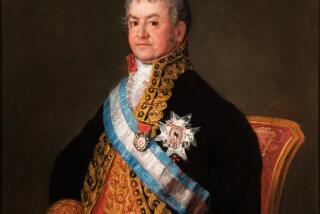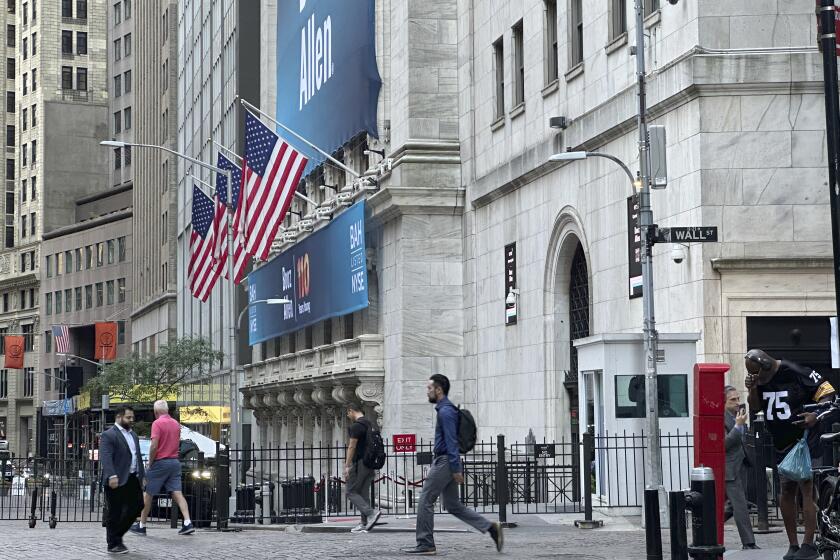A Cezanne donated to the White House has never hung there
- Share via
In The Times on Sunday, I told the story of eight paintings by French Post-Impressionist Paul Cézanne that were donated to the White House in 1952 -- a gift surreptitiously redirected to the National Gallery of Art. Although the ruse was uncovered during the Kennedy Administration, since then only a few of those paintings have spent much time in the presidential quarters.
One has never spent even a day in the White House. It’s not the most beautiful of the eight — far from it. But it’s the painting that, in one sense, might have the most to say to a president of the United States.
“Still Life with Skull” is a tough little picture. Just 13 by 18 inches, it shows a human skull in profile set atop a book. The painting is a focused meditation on mortality resting on a pedestal of knowledge — a subject any president must regularly contemplate.
ART: Can you guess the high price?
What reproductions of the work don’t convey very well are Cézanne’s blunt yet refined paint-handling and the picture’s aggressive, sometimes brittle color. Practically carved into the paint, the objects carry visual weight.
The objects are placed atop and in front of what is probably a folded carpet — a device Cézanne often used in setting up his still-life elements on a studio table. The background is an angular slab of dark green and a broad wedge of mottled blue — as hard and gem-like as malachite and lapis lazuli. They blend into dun colors that match the stripped skull.
Beneath the book the carpet glows deep red. When seen in person it’s almost maroon, with a scuffed surface like dried blood.
In one of the more remarkable passages of paint-handling, the scabrous red color is reflected in thin crimson washes along the edges of the book’s pages, adjacent to the skull’s ghoulish grin. Knowledge is plainly not something gained without sacrifice and pain.
PHOTOS: Arts and culture in pictures by The Times
Cézanne isn’t fooling around. It’s a late still life, made a few short years before he died. His first picture of a skull and a book was painted 40 years earlier, when he was 27 and just starting out. He came a long way in the interim, learning life’s hard lessons — and art’s as well.
“Still Life with Skull” may not be a light or cheerful picture, but the sober rumination certainly would be meaningful hanging in the White House. As it is, for many years the canvas has been in ground-floor galleries of the East Building at the National Gallery of Art, in a rather jumbled installation whose tame theme is merely “Small French Paintings” from the museum’s collection. There it hangs between another Cézanne still life (a milk jug and fruit) and a Paul Gauguin self-portrait.
The only time that almost all the Cézanne paintings bequeathed to the White House — six of the eight -- have been installed in the mansion came in the days immediately following the 1963 assassination of President Kennedy. On Nov. 26, while the Kennedy family was attending the Arlington Cemetery funeral and a mourning nation was glued to its televisions, the National Gallery sent over four Cézanne landscapes to join the two already installed in the family quarters’ Yellow Oval Room.
They were meant to give solace to Jacqueline Kennedy, who was a great Cézanne admirer. But under the circumstances the “Still Life with Skull” was not — could not — be among them.
The four landscapes remained in the White House for nine days, until Kennedy left Washington. They returned to the National Gallery on Dec. 4. On occasion a few of the four have made the short trip back up Pennsylvania Avenue to the White House (two are there now), but “Still Life With Skull” never has.
ALSO:
Chasing the White House Cezannes
Detroit Institute director: Selling art tantamount to closing museum
Getty Villa’s 5-ton wheel keeps ‘Prometheus Bound’ centered
More to Read
The biggest entertainment stories
Get our big stories about Hollywood, film, television, music, arts, culture and more right in your inbox as soon as they publish.
You may occasionally receive promotional content from the Los Angeles Times.










